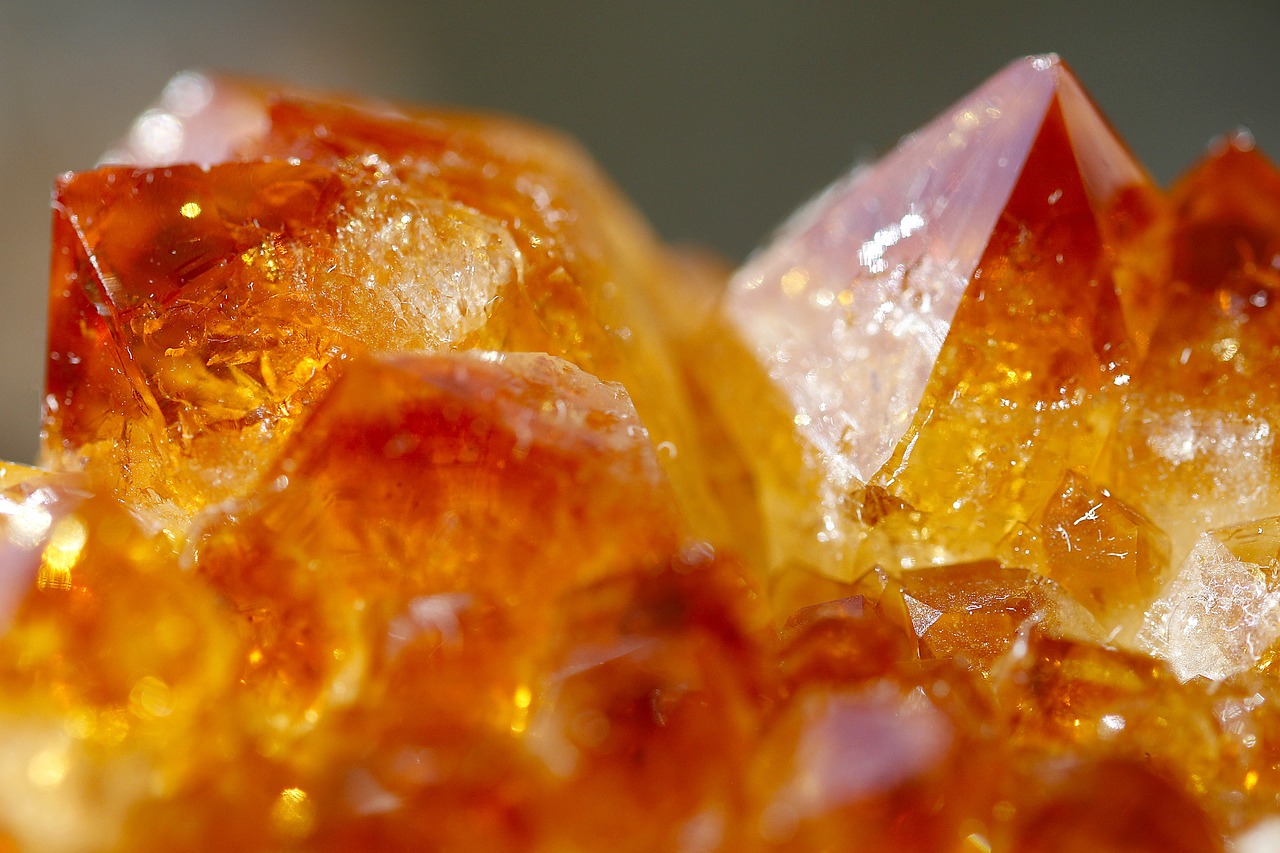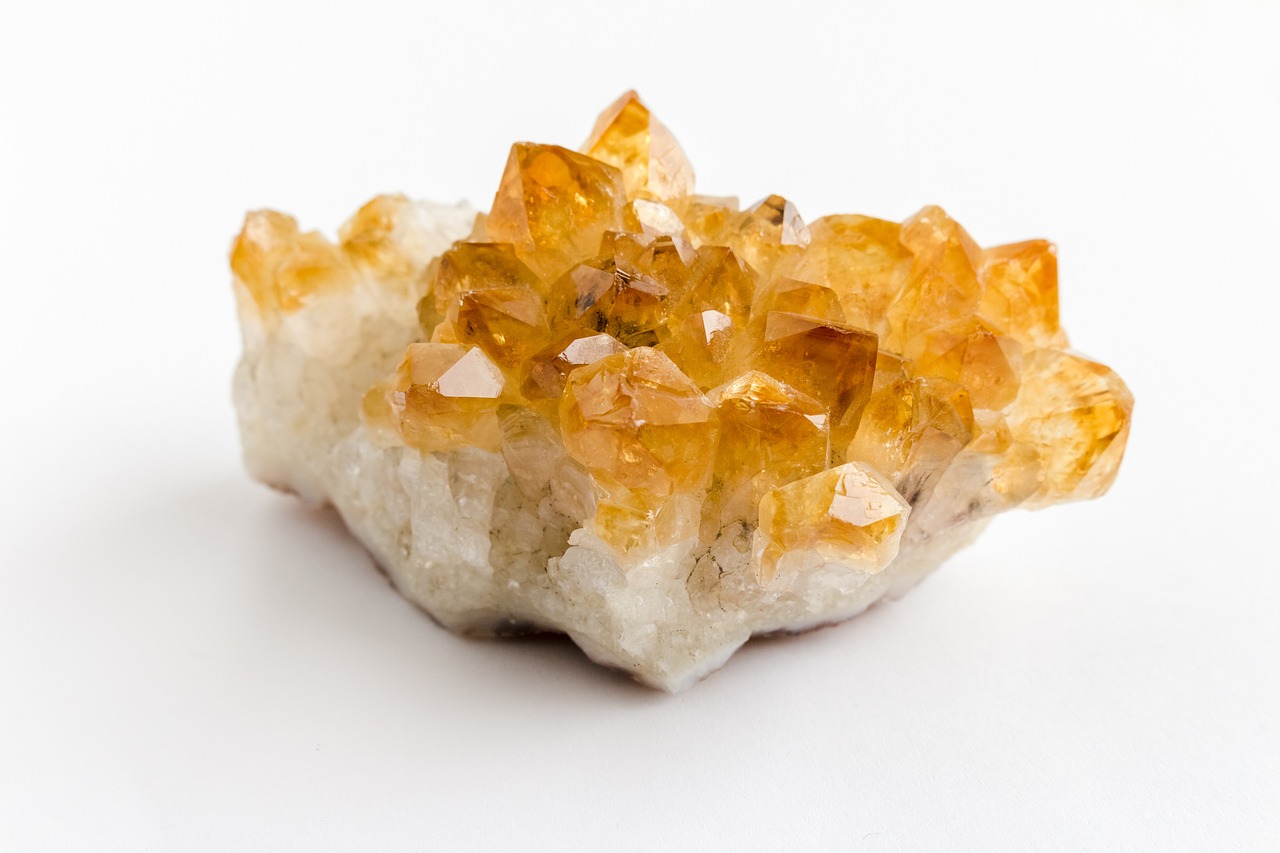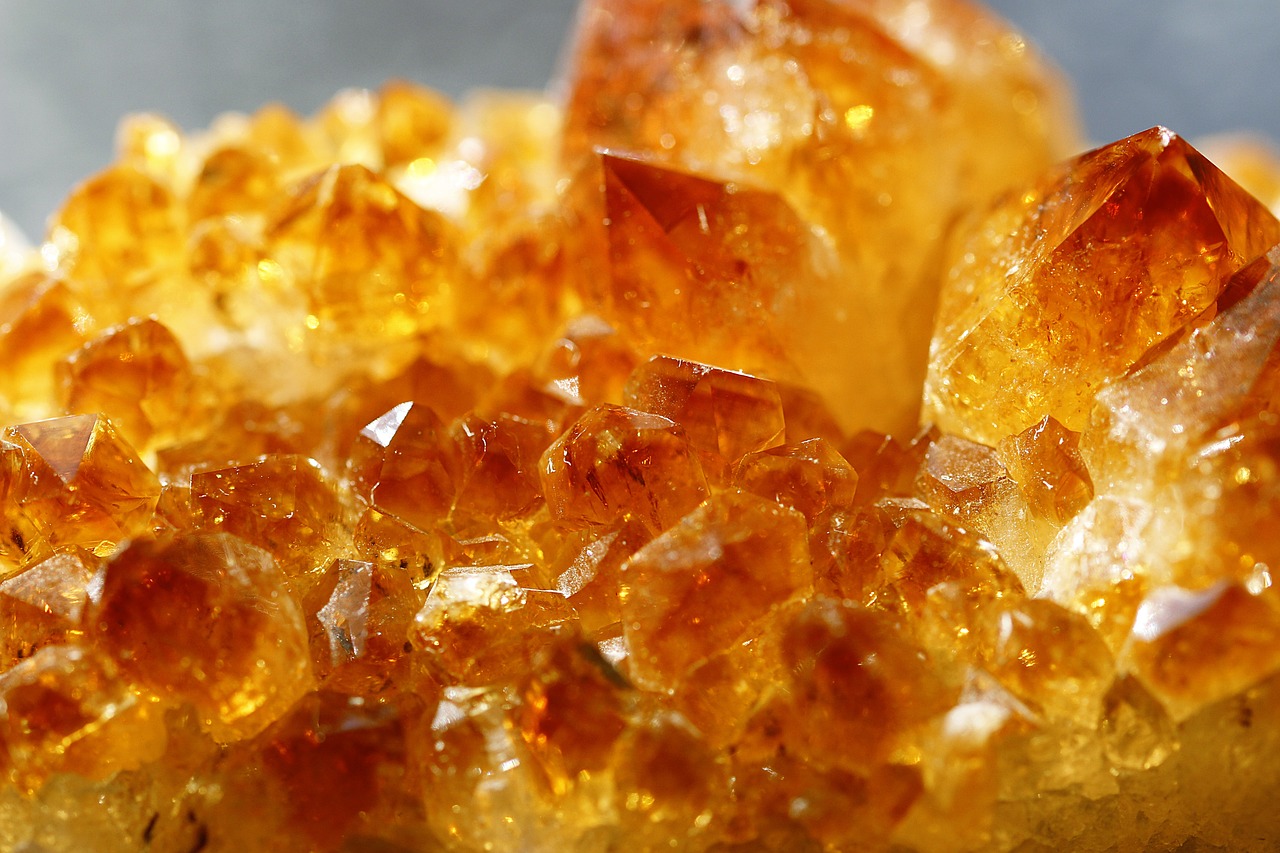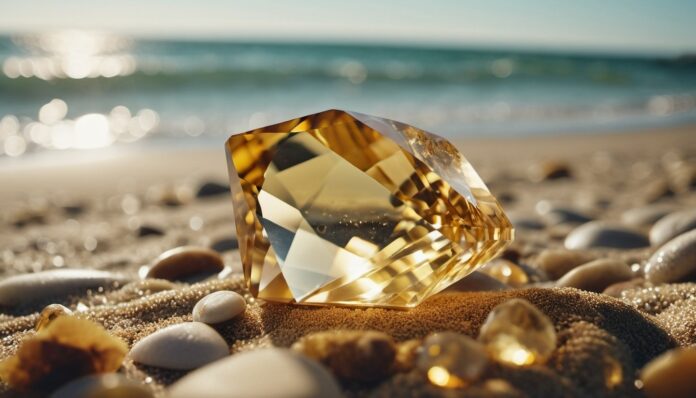Citrine is a radiant and vibrant gemstone, cherished for its warm hues and uplifting energy. This variety of quartz has been valued for centuries, used in jewelry, carvings, and decorative objects. Its sunny appearance and reputed metaphysical properties make citrine a favorite among collectors and gemstone enthusiasts.
Discovery and History
Citrine derives its name from the French word “citron,” meaning “lemon,” reflecting its bright yellow color. The gemstone has been known and used since ancient times, with the Greeks and Romans creating intaglios and cabochons from it.
Citrine was also popular in the 19th century as a decorative gem in Scottish jewelry. Throughout history, citrine has been mistaken for topaz due to their similar color, and it was often referred to as “golden topaz” or “Spanish topaz.”
Unique Formation and Composition
Citrine is a variety of quartz, specifically silicon dioxide (SiO2). Its distinctive yellow to brownish-orange color is caused by trace amounts of iron. Natural citrine is relatively rare, and most of the citrine on the market is produced by heat-treating amethyst or smoky quartz. This process enhances the color, resulting in the warm hues that citrine is known for.
Colors of Citrine
Citrine is celebrated for its range of warm colors, which can include:
- Pale Yellow: Light, delicate shades often referred to as “lemon quartz.”
- Golden Yellow: Rich and vibrant hues resembling the color of a ripe lemon.
- Amber: Deep yellow to orange-brown tones, reminiscent of honey.
- Madeira: Dark, reddish-orange shades named after the Madeira wine.
Sources and Mining Locations
 Citrine can be found in several locations worldwide, with significant deposits in Brazil, Uruguay, and Madagascar. Brazilian citrine is particularly renowned for its quality and abundance.
Citrine can be found in several locations worldwide, with significant deposits in Brazil, Uruguay, and Madagascar. Brazilian citrine is particularly renowned for its quality and abundance.
In addition to natural citrine, heat-treated citrine is produced from amethyst and smoky quartz found in Brazil, Uruguay, and Russia. Each region produces citrine with unique characteristics, adding to the stone’s diversity.
Symbolism and Meaning
Citrine is associated with prosperity, joy, and energy. It is believed to enhance creativity, promote motivation, and attract abundance. Many cultures use citrine as a talisman to bring happiness and positivity, as well as to foster a sense of well-being and confidence.
Healing Properties
Citrine is reputed to have numerous healing properties:
- Emotional Healing: Promotes a positive outlook, reduces depression, and alleviates anxiety.
- Physical Healing: Believed to aid in digestion, improve metabolism, and detoxify the body.
- Energy Boost: Enhances physical stamina and revitalizes the mind and body.
- Abundance Attraction: Attracts wealth and prosperity, often referred to as the “merchant’s stone.”
- Chakra Balancing: Used to balance and cleanse the solar plexus and sacral chakras.
Care and Maintenance
 Citrine is a durable gemstone with a rating of 7 on the Mohs scale of hardness. It is resistant to scratches but should still be handled with care to prevent damage. Clean citrine jewelry with warm, soapy water and a soft brush, avoiding harsh chemicals or ultrasonic cleaners. Store citrine separately to avoid scratching softer gemstones.
Citrine is a durable gemstone with a rating of 7 on the Mohs scale of hardness. It is resistant to scratches but should still be handled with care to prevent damage. Clean citrine jewelry with warm, soapy water and a soft brush, avoiding harsh chemicals or ultrasonic cleaners. Store citrine separately to avoid scratching softer gemstones.
Horoscope Signs and Citrine
Citrine is particularly beneficial for certain horoscope signs, enhancing their natural traits and providing balance:
- Sagittarius: Citrine helps Sagittarians remain optimistic and joyful, enhancing their natural enthusiasm.
- Leo: This stone aids Leos in maintaining their confidence and promoting a positive outlook.
- Aries: Citrine supports Aries by boosting their energy and motivation.
- Gemini: It helps Geminis stay cheerful and adaptable, promoting mental clarity.
Value of Citrine Compared to Diamond
Citrine is generally much more affordable than diamonds. The value of citrine varies based on color, clarity, and size, with common varieties being quite inexpensive and rare, deeply colored specimens costing more.
However, even the most expensive citrine is typically far less costly than a diamond of similar size. Diamonds are priced based on their carat weight, clarity, color, and cut, often reaching thousands of dollars per carat, while citrine remains accessible to a broader range of budgets.
Interesting Facts
- Citrine is named after the French word “citron,” meaning “lemon.”
- It is often mistaken for topaz due to their similar color.
- Citrine is known for its warm hues, ranging from pale yellow to reddish-brown.
- Natural citrine is rare; most citrine on the market is heat-treated amethyst or smoky quartz.
- Citrine has been used since ancient times for jewelry and carvings.
- Brazilian citrine is particularly famous for its quality and abundance.
- Citrine can be found in several countries worldwide.
- It is a variety of quartz, specifically silicon dioxide (SiO2).
- Citrine is durable and resistant to scratches.
- It is often used in rings, necklaces, bracelets, and earrings.
- Citrine is associated with prosperity, joy, and energy.
- It is believed to enhance creativity and attract abundance.
- Citrine provides an energy boost, revitalizing the mind and body.
- The largest citrine deposits are found in Brazil and Madagascar.
- Citrine comes in various warm shades, from light yellow to deep amber.
- The Greeks and Romans valued citrine for intaglios and cabochons.
- Citrine is used in Feng Shui to attract wealth and positivity.
- It enhances motivation and promotes a positive outlook.
- Citrine is considered the “merchant’s stone” for its ability to attract wealth.
- The warm color of citrine is due to trace amounts of iron.
- Citrine was highly valued by ancient civilizations, including the Greeks and Romans.
- Its unique colors ensure that each piece of citrine jewelry is one-of-a-kind.
Citrine is a gemstone that captivates with its beauty, history, and uplifting qualities. Whether you are a collector, a jewelry lover, or someone who appreciates the wonders of nature, citrine offers a fascinating glimpse into the earth’s geological processes.
Its warm hues and reputed healing properties ensure that there is a citrine piece to suit every taste, making it a cherished gemstone around the world.
